Pompei (città antica)
( Pompeii )
Pompeii ( pom-PAY-(ee), Latin: [pɔmˈpei̯.iː]) was an ancient city located in what is now the comune of Pompei near Naples in the Campania region of Italy. Pompeii, along with Herculaneum and many villas in the surrounding area (e.g. at Boscoreale, Stabiae), was buried under 4 to 6 m (13 to 20 ft) of volcanic ash and pumice in the eruption of Mount Vesuvius in 79 AD.
Largely preserved under the ash, the excavated city offers a unique snapshot of Roman life, frozen at the moment it was buried, although much of the detailed evidence of the everyday life of its inhabitants was lost because of excavations. It was a wealthy town, with a population of ca. 11,000 in AD 79, enjoying many fine public buildings and luxurious private houses with lavish decorations, furnishings and works of art which were the main attraction...Read more
Pompeii ( pom-PAY-(ee), Latin: [pɔmˈpei̯.iː]) was an ancient city located in what is now the comune of Pompei near Naples in the Campania region of Italy. Pompeii, along with Herculaneum and many villas in the surrounding area (e.g. at Boscoreale, Stabiae), was buried under 4 to 6 m (13 to 20 ft) of volcanic ash and pumice in the eruption of Mount Vesuvius in 79 AD.
Largely preserved under the ash, the excavated city offers a unique snapshot of Roman life, frozen at the moment it was buried, although much of the detailed evidence of the everyday life of its inhabitants was lost because of excavations. It was a wealthy town, with a population of ca. 11,000 in AD 79, enjoying many fine public buildings and luxurious private houses with lavish decorations, furnishings and works of art which were the main attractions for the early excavators. Organic remains, including wooden objects and human bodies, were interred in the ash. Over time, they decayed, leaving voids that archaeologists found could be used as moulds to make plaster casts of unique, and often gruesome, figures in their final moments of life. The numerous graffiti carved on the walls and inside rooms provide a wealth of examples of the largely lost Vulgar Latin spoken colloquially at the time, contrasting with the formal language of the classical writers.
Pompeii is a UNESCO World Heritage Site and is one of the most popular tourist attractions in Italy, with approximately 2.5 million visitors annually.
After many excavations prior to 1960 that had uncovered most of the city but left it in decay, further major excavations were banned or limited to targeted, prioritised areas. In 2018, these led to new discoveries in some previously unexplored areas of the city.
 Settlement phases of Pompeii
Settlement phases of Pompeii red: 1st (Samnite) town
blue: 1st expansion, 4th c. BC
green: 2nd expansion
yellow: Roman expansion, from 89 BC
Although best known for its Roman remains visible today, dating from AD 79, it was built upon a substantial city dating from much earlier times. Expansion of the city from an early nucleus (the old town) accelerated after 450 BC under the Greeks following the battle of Cumae.[1]
Early history Greek Doric Temple (6th c BC) in Triangular Forum
Greek Doric Temple (6th c BC) in Triangular Forum Etruscan Temple of Apollo
Etruscan Temple of ApolloThe first stable settlements on the site date to the 8th century BC when the Oscans,[2] a population of central Italy, founded five villages in the area.
With the arrival of the Greeks in Campania from around 740 BC, Pompeii entered the orbit of the Hellenic people. The most important building of this period is the Doric Temple,[3] built away from the centre in what would later become the Triangular Forum.[4]: 62 At the same time the cult of Apollo was introduced.[5] Greek and Phoenician sailors used the location as a safe port.
In the early 6th century BC, the settlement merged into a single community centred on the important crossroad between Cumae, Nola, and Stabiae and was surrounded by a tufa city wall (the pappamonte wall).[6][7] The first wall (which was also used as a base for the later wall) unusually enclosed a much greater area than the early town together with much agricultural land.[8] That such an impressive wall was built at this time indicates that the settlement was already important and wealthy. The city began to flourish and maritime trade started with the construction of a small port near the mouth of the river.[4] The earliest settlement was focused in regions VII and VIII of the town (the old town) as identified from stratigraphy below the Samnite and Roman buildings, as well as from the different and irregular street plan.
By 524 BC[9] the Etruscans had settled in the area, including Pompeii, finding in the river Sarno a communication route between the sea and the interior. Like the Greeks, the Etruscans did not conquer the city militarily, but simply controlled it, and Pompeii enjoyed a sort of autonomy.[4]: 63 Nevertheless, Pompeii became a member of the Etruscan League of cities.[10] Excavations in 1980–1981 have shown the presence of Etruscan inscriptions and a 6th-century BC necropolis.[11] Under the Etruscans, a primitive forum or simple market square was built, as well as the Temple of Apollo, in both of which objects including fragments of bucchero were found by Maiuri.[12] Several houses were built with the so-called Tuscan atrium, typical of this people.[4]: 64
 City walls
City wallsThe city wall was strengthened in the early 5th century BC with two façades of relatively thin, vertically set slabs of Sarno limestone some four metres (13 ft) apart filled with earth (the orthostate wall).[13]
In 474 BC, the Greek city of Cumae, allied with Syracuse, defeated the Etruscans at the Battle of Cumae and gained control of the area.
The Samnite period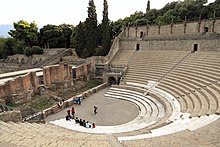 Large Theatre
Large Theatre Odeon
Odeon The Temple of Jupiter (2nd c. BC)
The Temple of Jupiter (2nd c. BC)The period between about 450–375 BC witnessed large areas of the city being abandoned while important sanctuaries such as the Temple of Apollo show a sudden lack of votive material remains.[14]
The Samnites, people from the areas of Abruzzo and Molise, and allies of the Romans, conquered Greek Cumae between 423 and 420 BC. It is likely that all of the surrounding territory, including Pompeii, was already conquered around 424 BC. The new rulers gradually imposed their architecture and enlarged the town.
From 343 to 341 BC in the Samnite Wars, the first Roman army entered the Campanian plain bringing with it the customs and traditions of Rome, and in the Roman Latin War from 340 BC, the Samnites were faithful to Rome. Although governed by the Samnites, Pompeii entered the Roman orbit, to which it remained faithful even during the third Samnite war and in the war against Pyrrhus. In the late 4th century BC, the city began expanding from its nucleus into the open-walled area. The street plan of the new areas was more regular and more conformal to Hippodamus's street plan. The city walls were reinforced in Sarno stone in the early 3rd century BC (the limestone enceinte, or the "first Samnite wall"). It formed the basis for the currently visible walls with an outer wall of rectangular limestone blocks as a terrace wall supporting a large agger, or earth embankment, behind it.
After the Samnite Wars from 290 BC, Pompeii was forced to accept the status of socii of Rome, maintaining, however, linguistic and administrative autonomy.
From the outbreak of the Second Punic War (218–201 BC) in which Hannibal's invasion threatened many cities, Pompeii remained faithful to Rome unlike many of the southern cities. As a result, an additional internal wall was built of tufa and the internal agger and outer façade raised, resulting in a double parapet with a wider wall-walk.[4] Despite the political uncertainty of these events and the progressive migration of wealthy men to quieter cities in the eastern Mediterranean, Pompeii continued to flourish due to the production and trade of wine and oil with places like Provence and Spain,[15] as well as to intensive agriculture on farms around the city.
In the 2nd century BC, Pompeii enriched itself by taking part in Rome's conquest of the east, as shown by a statue of Apollo in the Forum erected by Lucius Mummius in gratitude for their support in the sack of Corinth and the eastern campaigns. These riches enabled Pompeii to bloom and expand to its ultimate limits. The Forum and many public and private buildings of high architectural quality were built, including The Large Theatre, the Temple of Jupiter, the Basilica, the Comitium, the Stabian Baths, and a new two-story portico.[16]
The Roman period Gladiator barracks
Gladiator barracksPompeii was one of the towns of Campania that rebelled against Rome in the Social Wars and in 89 BC it was besieged by Sulla, who targeted the strategically vulnerable Porta Ercolano with his artillery as can still be seen by the impact craters of thousands of ballista shots in the walls. Many nearby buildings inside the walls were also destroyed.[17] Although the battle-hardened troops of the Social League, headed by Lucius Cluentius, helped in resisting the Romans, Pompeii was forced to surrender after the conquest of Nola. The result was that Pompeii became a Roman colony named Colonia Cornelia Veneria Pompeianorum. Many of Sulla's veterans were given land and property in and around the city, while many who opposed Rome were dispossessed of their property. Despite this, the Pompeians were granted Roman citizenship and quickly assimilated into the Roman world. The main language in the city became Latin,[18] and many of Pompeii's old aristocratic families Latinized their names as a sign of assimilation.[19]
The area around Pompeii became very prosperous due to the desirability of living on the Bay of Naples for wealthy Romans and due to the rich agricultural land.[20] Many farms and villas were built nearby, outside the city and many have been excavated. These include the Villa of the Mysteries, Villa of Diomedes, several at Boscoreale, Boscotrecase, Oplontis, Terzigno, and Civita Guiliana.[21]
The city became an important passage for goods that arrived by sea and had to be sent toward Rome or Southern Italy along the nearby Appian Way. Many public buildings were constructed or refurbished and improved under the new order; new buildings included the Amphitheatre of Pompeii in 70 BC, the Forum Baths, and the Odeon. In comparison, the Forum was embellished with the colonnade of Popidius before 80 BC.[22] These buildings raised the status of Pompeii as a cultural centre in the region as it outshone its neighbours in the number of places for entertainment which significantly enhanced the social and economic development of the city.
Under Augustus, from about 30 BC, a major expansion in new public buildings, as in the rest of the empire, included the Eumachia Building, the Sanctuary of Augustus and the Macellum. From about 20 BC, Pompeii was fed with running water by a spur from the Serino Aqueduct, built by Marcus Vipsanius Agrippa.
 Fresco depicting the fight in the amphitheatre between Pompeians and Nucerians
Fresco depicting the fight in the amphitheatre between Pompeians and NuceriansIn AD 59, there was a serious riot and bloodshed in the amphitheatre between Pompeians and Nucerians (which is recorded in a fresco) and which led the Roman Senate to send the Praetorian Guard to restore order and to ban further events for ten years.[23][24]
AD 62–79The inhabitants of Pompeii had long been used to minor earthquakes (indeed, the writer Pliny the Younger wrote that earth tremors "were not particularly alarming because they are frequent in Campania"), but on 5 February 62[25] a severe earthquake did considerable damage around the bay, and particularly to Pompeii. It is believed that the earthquake would have registered between 5 and 6 on the Richter magnitude scale.[26]
On that day in Pompeii, there were to be two sacrifices, as it was the anniversary of Augustus being named Pater Patriae ("Father of the Country") and also a feast day to honour the guardian spirits of the city. Chaos followed the earthquake; fires caused by oil lamps that had fallen during the quake added to the panic. The nearby cities of Herculaneum and Nuceria were also affected.[26]
Between 62 AD and the eruption in 79 AD, most rebuilding was done in the private sector and older, damaged frescoes were often covered with newer ones, for example. In the public sector, the opportunity was taken to improve buildings and the city plan, e.g. in the Forum.[27]
An important field of current research concerns structures that were restored between the earthquake of 62 and the eruption. It was thought until recently that some of the damage had still not been repaired at the time of the eruption, but this is doubtful as the evidence of missing forum statues and marble wall veneers are most likely due to robbers after the city's burial.[28][29] The public buildings on the east side of the Forum were largely restored and were enhanced by beautiful marble veneers and other modifications to the architecture.[30]
Some buildings like the Central Baths were only started after the earthquake and were built to enhance the city with modern developments in their architecture, as had been done in Rome, in terms of wall-heating and window glass, and with well-lit spacious rooms. The new baths took over a whole insula by demolishing houses, which may have been made easier by the earthquake that had damaged these houses. This shows that the city was still flourishing rather than struggling to recover from the earthquake.[31]
In about 64, Nero and his wife Poppaea visited Pompeii and made gifts to the temple of Venus (the city's patron deity),[32] probably when he performed in the theatre of Naples.[33]
By 79, Pompeii had a population of 20,000,[34] which had prospered from the region's renowned agricultural fertility and favourable location, although more recent estimates are up to 11,500 based on household counts.[35]
Eruption of Vesuvius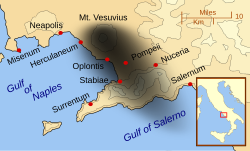 Pompeii and other cities affected by the eruption of Mount Vesuvius. The black cloud represents the general distribution of ash and cinder. Modern coast lines are shown.
Pompeii and other cities affected by the eruption of Mount Vesuvius. The black cloud represents the general distribution of ash and cinder. Modern coast lines are shown.The eruption lasted for two days.[36] The first phase was of pumice rain (lapilli) lasting about 18 hours, allowing most inhabitants to escape. Only approximately 1,150 bodies[37] have so far been found on site, which seems to confirm this theory, and most escapees probably managed to salvage some of their most valuable belongings; many skeletons were found with jewellery, coins, and silverware.
At some time in the night or early the next day, pyroclastic flows began near the volcano, consisting of high speed, dense, and scorching ash clouds, knocking down wholly or partly all structures in their path, incinerating or suffocating the remaining population and altering the landscape, including the coastline. By the evening of the second day, the eruption was over, leaving only haze in the atmosphere through which the sun shone weakly.
A multidisciplinary volcanological and bio-anthropological study[38] of the eruption products and victims, merged with numerical simulations and experiments, indicates that at Pompeii and surrounding towns heat was the main cause of death of people, previously believed to have died by ash suffocation. The results of the study, published in 2010, show that exposure to at least 250 °C (480 °F) hot pyroclastic flows at a distance of 10 kilometres (6 miles) from the vent was sufficient to cause instant death, even if people were sheltered within buildings. The people and buildings of Pompeii were covered in up to twelve different layers of tephra, in total, up to 6 metres (19.7 ft) deep. Archaeology in 2023 showed that some buildings collapsed due to one or more earthquakes during the eruption, killing the occupants.[39]
Pliny the Younger provided a first-hand account of the eruption of Mount Vesuvius from his position across the Bay of Naples at Misenum,[40] but it was written approximately 27 or 28 years after the event.[41] His uncle, Pliny the Elder, with whom he had a close relationship, died while attempting to rescue stranded victims. As admiral of the fleet, Pliny the Elder had ordered the ships of the Imperial Navy stationed at Misenum to cross the bay to assist evacuation attempts. Volcanologists have recognised the importance of Pliny the Younger's account of the eruption by calling similar events "Plinian". It had long been thought that the eruption was an August event based on one version of the letter, but another version[42] gives a date of the eruption as late as 23 November. A later date is consistent with a charcoal inscription at the site, discovered in 2018, which includes the date of 17 October and which must have been recently written.[43] A collaborative study in 2022 determined a date of 24–25 October.[44][45]
An October/November eruption is clearly supported by many pieces of evidence: the fact that people buried in the ash appear to have been wearing heavier clothing than the light summer clothes typical of August; the fresh fruit and vegetables in the shops are typical of October – and conversely the summer fruit typical of August was already being sold in dried, or conserved form; nuts from chestnut trees were found at Oplontis, which would not have been mature before mid-September;[46] wine fermenting jars had been sealed, which would have happened around the end of October; coins found in the purse of a woman buried in the ash include one with a 15th imperatorial acclamation among the emperor's titles. These coins could not have been minted before the second week of September.[42]
Rediscovery and excavations Periods/areas of excavations
Periods/areas of excavationsTitus appointed two ex-consuls to organise a relief effort while donating large amounts of money from the imperial treasury to aid the victims of the volcano.[47] He visited Pompeii once after the eruption and again the following year[48] but no work was done on recovery.
Soon after the city's burial, survivors and possibly thieves came to salvage valuables, including the marble statues from the Forum and other precious materials from buildings. There is wide evidence of post-eruption disturbance, including holes made through walls. The city was not completely buried, and the tops of larger buildings would have been visible above the ash, making it obvious where to dig or salvage building material.[49] The robbers left traces of their passage, as in a house where modern archaeologists found a wall graffito saying "house dug".[50]
Over the following centuries, its name and location were forgotten, though it still appeared on the Tabula Peutingeriana of the 4th century. Further eruptions, particularly in 471–473 and 512, covered the remains more deeply. The area became known as the La Civita (the city) due to the features in the ground.[51]
 Plan of Fontana's aqueduct through Pompeii
Plan of Fontana's aqueduct through Pompeii The Garden of the Fugitives: plaster casts of victims still in situ; many casts are in the Archaeological Museum of Naples.
The Garden of the Fugitives: plaster casts of victims still in situ; many casts are in the Archaeological Museum of Naples.The next known date that any part was unearthed was in 1592, when architect Domenico Fontana, while digging an underground aqueduct to the mills of Torre Annunziata, ran into ancient walls covered with paintings and inscriptions. His aqueduct passed through and underneath a large part of the city[52] and would have had to pass through many buildings and foundations, as they still can be seen in many places today. However, he kept the finding secret.
In 1689, Francesco Picchetti saw a wall inscription mentioning decurio Pompeiis ("town councillor of Pompeii"), but he associated it with a villa of Pompey. Francesco Bianchini pointed out the true meaning, and he was supported by Giuseppe Macrini, who in 1693 excavated some walls and wrote that Pompeii lay beneath La Civita.[53]
Herculaneum was rediscovered in 1738 by workers digging for the foundations of a summer palace for the King of Naples, Charles of Bourbon. Due to the spectacular quality of the finds, the Spanish military engineer Roque Joaquín de Alcubierre made excavations to find further remains at the site of Pompeii in 1748, even if the city was not identified.[54] Charles of Bourbon took great interest in the finds, even after leaving to become king of Spain because the display of antiquities reinforced Naples' political and cultural prestige.[55] On 20 August 1763, an inscription [...] Rei Publicae Pompeianorum [...] was found and the city was identified as Pompeii.[56]
Karl Weber directed the first scientific excavations.[57] He was followed in 1764 by military engineer Franscisco la Vega, who was succeeded by his brother, Pietro, in 1804.[58]
There was much progress in exploration when the French occupied Naples in 1799 and ruled over Italy from 1806 to 1815. The land on which Pompeii lies was confiscated, and up to 700 workers were employed in the excavations. The excavated areas in the north and south were connected. Parts of the Via dell'Abbondanza were also exposed in the west–east direction, and for the first time, an impression of the size and appearance of the ancient town could be appreciated. In the following years, the excavators struggled with a lack of money. Excavations progressed slowly, but with significant finds such as the houses of the Faun, of Menandro, of the Tragic Poet and the Surgeon.
 Fiorelli's plan of regiones
Fiorelli's plan of regionesGiuseppe Fiorelli took charge of the excavations in 1863 and made greater progress.[59] During early excavations of the site, occasional voids in the ash layer had been found that contained human remains. Fiorelli realised these were spaces left by the decomposed bodies, and so devised the technique of injecting plaster into them to recreate the forms of Vesuvius's victims. This technique is still in use today, with a clear resin now used instead of plaster because it is more durable and does not destroy the bones, allowing further analysis.[60]
Fiorelli also introduced scientific documentation. He divided the city into today's nine areas (regiones) and blocks (insulae) and numbered the entrances of the individual houses (domus). Fiorelli also published the first periodical with excavation reports. Under his successors, the entire west section of the city was exposed.
Modern archaeology Map of Pompeii
Map of PompeiiAfter those of Fiorelli, excavations continued in an increasingly more systematic and considered manner under several directors of archaeology though still with the main interest in making spectacular discoveries and uncovering more houses rather than answering the main questions about the city and its long term preservation.[61]
In the 1920s, Amedeo Maiuri excavated older layers beneath those of 79 AD for the first time to learn about the settlement history.[62] Maiuri made the last excavations on a grand scale in the 1950s, and the area south of the Via dell'Abbondanza and the city wall was almost completely uncovered, but they were poorly documented scientifically. Preservation was haphazard, and his reconstructions were difficult to distinguish from the original ruins, which is a great handicap for studying genuine antique remains. Questionable reconstruction was also done after the severe earthquake of 1980, which caused great destruction. Since then, work has been confined to the excavated areas except for targeted soundings and excavations. Further excavations on a large scale are not planned, and today archaeologists are more engaged in reconstructing, documenting and slowing the decay of the ruins.
In December 2018, archaeologists discovered the remains of harnessed horses in the Villa of the Mysteries.[63][64][65]
 Via dell'Abbondanza, the main street in Pompeii
Via dell'Abbondanza, the main street in PompeiiUnder the 'Great Pompeii Project' over 2.5 km (1.6 mi) of ancient walls within the city were relieved of danger of collapse by treating the unexcavated areas behind the street fronts in order to increase drainage and reduce the pressure of groundwater and earth on the walls, a problem especially in the rainy season. These excavations resumed on unexcavated areas of Regio V.[66] In November 2020 the remains of two men, thought to be a rich man and his slave, were found in a 2 m-thick (6.6 ft) layer of ash. They appeared to have escaped the first eruption but were killed by a second blast the next day. A study of the bones showed that the younger one appeared to have done manual labour and hence was likely a slave.[67]
In December 2020, a thermopolium, an inn or snack-bar, was excavated in Regio V. In addition to brightly coloured frescoes depicting some of the food on offer, archaeologists found eight dolia (terracotta pots) still containing remnants of meals, including duck, goat, pig, fish, and snails.[68] They also found a decorated bronze drinking bowl known as a patera, wine flasks, amphora, and ceramic jars used for cooking stews and soups. One fresco depicts a dog with a collar on a leash, possibly reminding customers to leash their pets. The complete skeleton of a tiny adult dog was also discovered, measuring only about 20–25 cm (7.9–9.8 in) at the shoulder, which provides evidence of the highly selective breeding of dogs in Roman times.[69][68][70]
In January 2021 a well-preserved "large, four-wheel ceremonial chariot" was uncovered in the portico of the luxurious villa in Civita Giuliana,[71] north of Pompeii, where a stable had previously been discovered in 2018.[21] The carriage is made of bronze and black and red wooden panels, with engraved silver and bronze medallions at the back. It is now thought to be an elaborate and unique bridal carriage called a pilentum and in 2023 has been restored for display at the Baths of Diocletian.[72] Nearby the bodies of two fugitives had been found using plaster casts, and in a stable the remains of horses, one still in harness.
In 2021 an exceptional 1st century AD painted tomb of a freed-slave, Marcus Venerius Secundio, containing mummified human remains, was discovered outside the Porta Sarno gate.[73] Its inscription records he achieved custodianship of the Temple of Venus and membership of the Augustales, priests of the Imperial Cult. Also, he organised Greek and Latin performances lasting four days, the first evidence of Greek cultural events in Pompeii.
Conservation The buildings on the left show signs of decay due to the infestation of various plants, while the debris accumulating on the footpath indicates erosion of the infrastructure. The footpaths and road have also been worn down by pedestrian activity since excavation.
The buildings on the left show signs of decay due to the infestation of various plants, while the debris accumulating on the footpath indicates erosion of the infrastructure. The footpaths and road have also been worn down by pedestrian activity since excavation.Objects buried beneath Pompeii were well-preserved for almost 2,000 years as the lack of air and moisture allowed little to no deterioration. However, Pompeii has been exposed to natural and anthropic deterioration following excavation.
Weathering, erosion, light exposure, water damage, poor methods of excavation and reconstruction, introduced plants and animals, tourism, vandalism and theft have all damaged the site in some way. The lack of adequate weather protection for all but the most interesting and important buildings has allowed original interior decoration to fade or be lost. Two-thirds of the city has been excavated, but the remnants of the city are rapidly deteriorating.[74]
Furthermore, during World War II many buildings were badly damaged or destroyed by bombs dropped in several raids by the Allied forces.[75]
The conservation concern has constantly worried archaeologists. The ancient city was included in the 1996 World Monuments Watch by the World Monuments Fund, and again in 1998 and in 2000. In 1996 the organisation claimed that Pompeii "desperately need[ed] repair" and called for the drafting of a general plan of restoration and interpretation.[76] The organisation supported conservation at Pompeii with funding from American Express and the Samuel H. Kress Foundation.[77]
The Schola Armatorum ('House of the Gladiators')[78] collapsed in 2010 caused by heavy rainfall and lack of proper drainage.[79] The structure was not open to visitors, but the outside was visible to tourists. There was fierce controversy after the collapse, with accusations of neglect.[80][81]
Today, funding is mostly directed into conservation of the site; however, due to the expanse of Pompeii and the scale of the problems, this is inadequate in halting the slow decay of the materials. A 2012 study recommended an improved strategy for interpretation and presentation of the site as a cost-effective method of improving its conservation and preservation in the short term.[82]
In June 2013, UNESCO warned that if restoration and preservation works "fail to deliver substantial progress in the next two years," Pompeii could be placed on the List of World Heritage in Danger.[83] A "Grande Progetto Pompei" project of about five years had begun in 2012 with the European Union and included stabilization and conservation of buildings in the highest risk areas. In 2014, UNESCO headquarters received a new management plan to help integrate the property's management, conservation, and maintenance programs.[84]
In 2020 many domus gardens, orchards and vineyards were carefully recreated using depictions in frescoes and archaeological finds to give better insights into what they were like before the catastrophe.[85] These include the House of Julia Felix, the House of the Golden Cupids,[86] the House of Loreius Tiburtinus, the House of Cornelius Rufus[87] and the Garden of the Fugitives.
In 2021 several long-closed domus were re-opened after restoration including the House of the Ship Europa,[88] House of the Orchard[89] and House of the Lovers.[90] Also the newly excavated House of Leda and the Swan[91] has opened.[79]
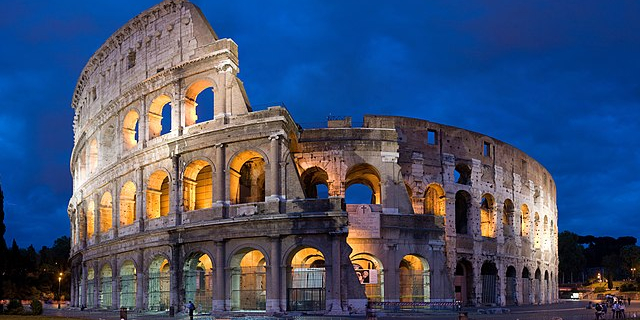



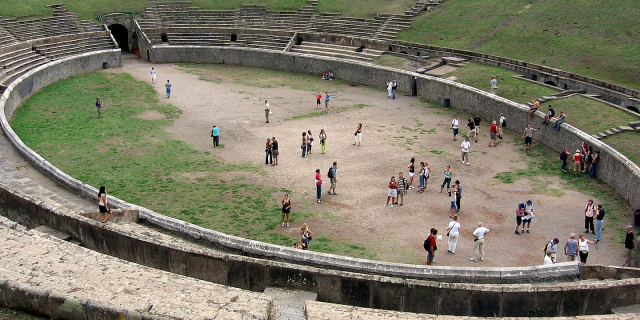

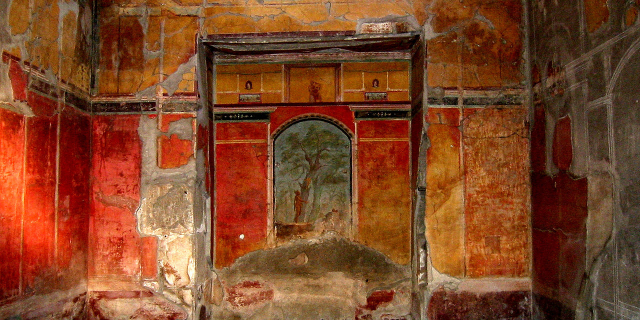


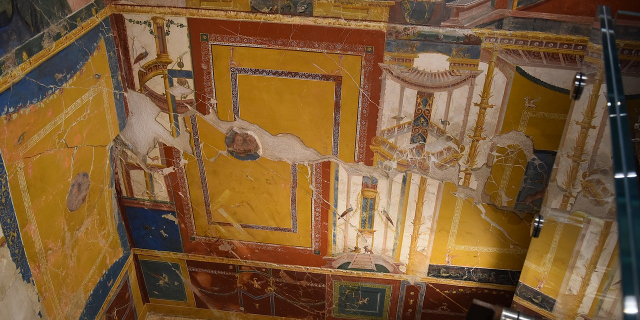


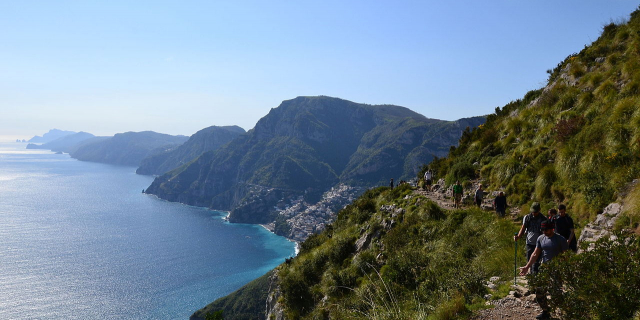



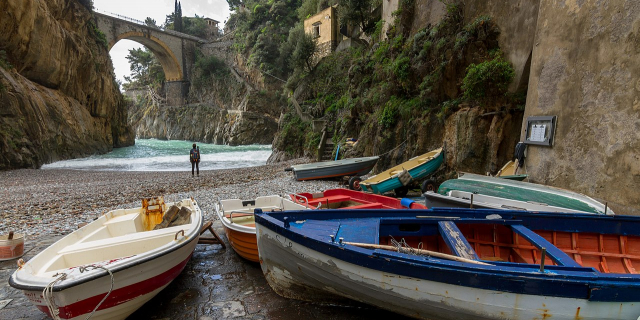





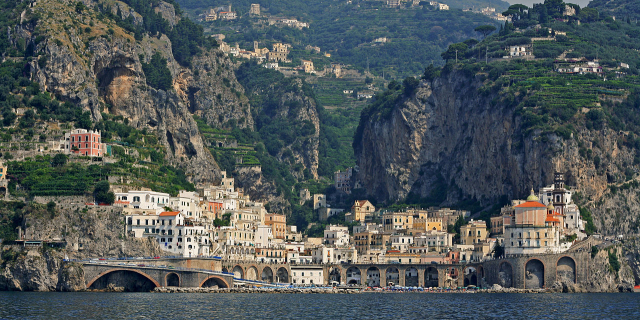
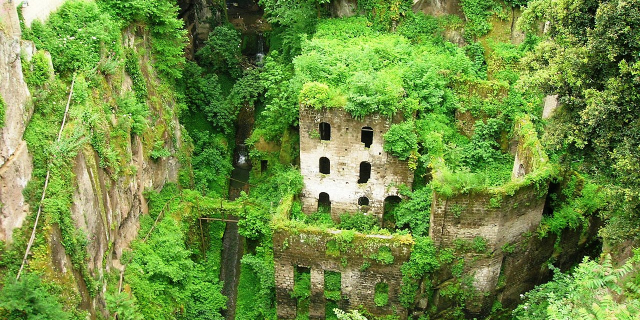


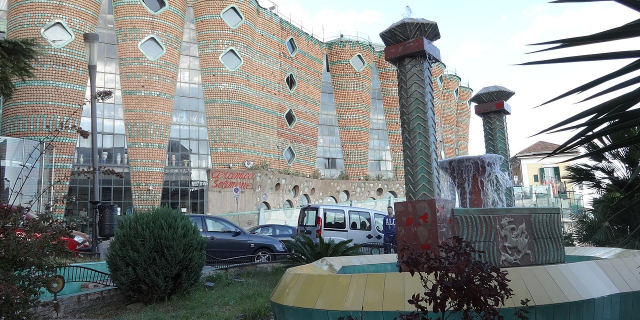



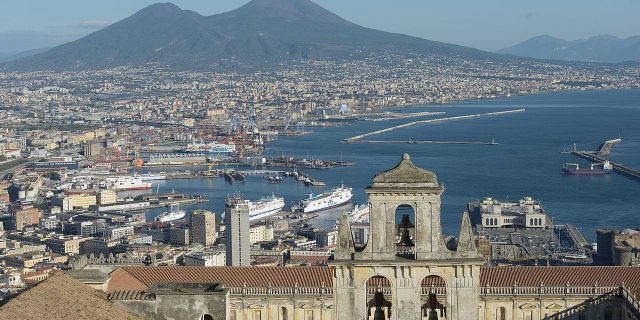



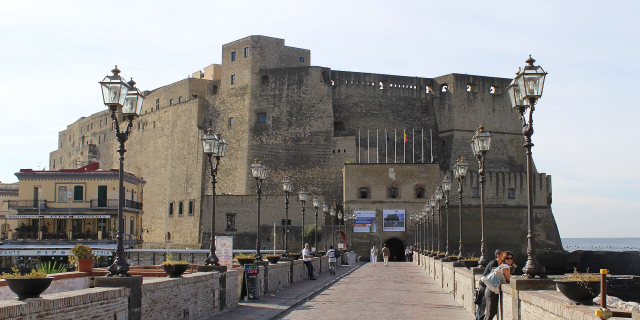

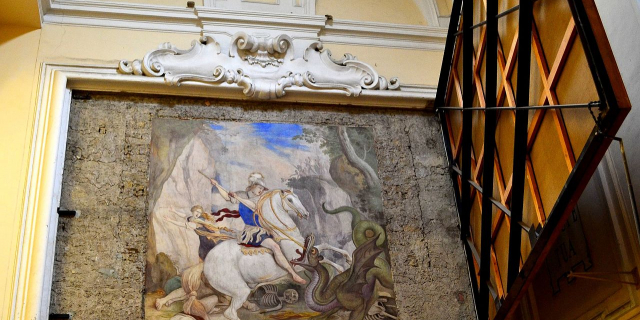
Add new comment